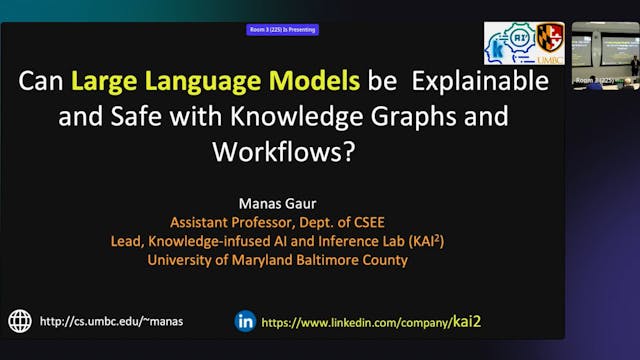Explainable AI using Background Knowledge
Deep Learning for and with Knowledge Graphs Track
•
26m
One of the current key challenges in Explainable AI is in correctly interpreting activations of hidden neurons. It seems evident that accurate interpretations thereof would provide insights into the question what a deep learning system has internally detected as relevant on the input, thus lifting some of the black box character of deep learning systems.
The state of the art on this front indicates that hidden node activations appear to be interpretable in a way that makes sense to humans, at least in some cases. Yet, systematic automated methods that would be able to first hypothesize an interpretation of a hidden neuron activations, and then verify it, are mostly missing.
In this presentation, we provide such a method and demonstrate that it provides meaningful interpretations. It is based on using large-scale background knowledge – a class hierarchy of approx. 2 million classes curated from the Wikipedia Concept Hierarchy – together with a symbolic reasoning approach called concept induction based on description logics that was originally developed for applications in the Semantic Web field. Our results show that we can automatically attach meaningful labels from the background knowledge to individual neurons in the dense layer through a hypothesis and verification process.
Up Next in Deep Learning for and with Knowledge Graphs Track
-
Targeted Knowledge Infusion To Make C...
Conversational Systems (CSys) represent practical and tangible outcomes of advances in NLP and AI. CSys see continuous improvements through unsupervised training of large language models (LLMs) on a humongous amount of generic training data. However, when these CSys are suggested for use in domai...
-
Neuralsymbolic Visual Understanding a...
Visual AI has made incredible progress in basic vision tasks using deep learning techniques that can detect concepts in visual scenes accurately and quickly. However, the existing techniques rely on labelled datasets that lack common sense knowledge about visual concepts and have biased distribut...
-
Knowledge Graph Completion using Embe...
Knowledge Graphs (KGs) are often generated automatically or manually which lead to KGs being in complete. Recent years have witnessed many studies on link prediction using KG embeddings which is one of the mainstream tasks in KG completion. Most of the existing methods learn the latent representa...



